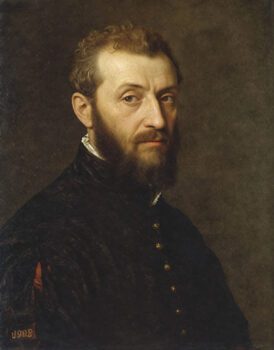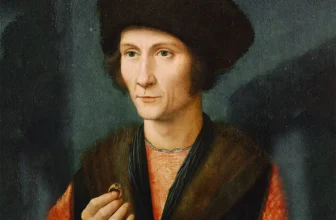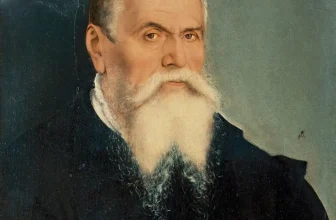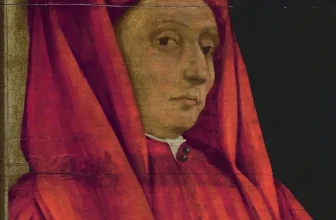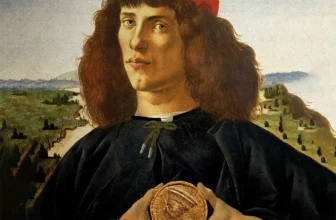What Was Paolo Veronese Known For
In the luminous city of Venice, where the canals reflect golden sunsets and grand palazzos whisper tales of history, one artist emerged as a master of color, elegance, and theatricality, Paolo Veronese. Known for his opulent and majestic compositions, Veronese captured the spirit of the Venetian Renaissance through vivid storytelling and a sumptuous palette that rivaled nature itself. His works were not merely paintings; they were orchestrated spectacles that celebrated beauty, drama, and divine grandeur.
But behind the majestic façades of his paintings lay a man who was both a devoted craftsman and a controversial figure, whose art once led him to stand trial before the Inquisition. This is the story of Paolo Veronese, a genius of the Venetian Renaissance.
Who Was Paolo Veronese?
Paolo Veronese, born Paolo Caliari in 1528 in Verona, Italy, came into the world during a time when the Renaissance was transforming the cultural fabric of Europe. He adopted the name Veronese to honor his birthplace, a common practice among artists of the period. His father, a stonecutter, perhaps instilled in him an early appreciation for form and structure, but it was his artistic talent that would soon set him apart.
Veronese began his training under local painters in Verona, notably with Antonio Badile, who would later become his father-in-law. His early works already showed a flair for complex compositions and a mastery of perspective, but it wasn’t until he moved to Venice in the early 1550s that his career truly flourished.
Venice, a hub of wealth and cultural innovation, provided Veronese the perfect stage for his talents. Unlike the more austere aesthetics of Florence or the classical intellectualism of Rome, Venice embraced sensuality, spectacle, and pageantry, all qualities that Veronese embodied with flair.
The Style of Paolo Veronese: The Theater of Color and Composition
Veronese’s art is the embodiment of Venetian Renaissance painting, marked by luminous color, balanced composition, and theatrical grandeur. While his contemporaries, Titian, Tintoretto, and Jacopo Bassano, each had distinct styles, Veronese carved out a unique niche. He specialized in monumental narrative scenes, often biblical or mythological, but rendered with an opulence that made them feel more like festive banquets than solemn rituals.
His color palette was bold and vibrant, saturated reds, glowing golds, cool greens, and brilliant blues, applied with a fluidity that gave his canvases a living, breathing quality. Light in Veronese’s paintings doesn’t merely illuminate; it sculpts the figures and heightens the drama. His use of architectural settings, drawing from Palladian architecture, often turned his works into grand prosceniums, as if the viewer were watching a performance.
Veronese’s characters are often draped in contemporary Venetian attire, regardless of the time period of the scene. This anachronism wasn’t accidental; it was part of his vision. For Veronese, painting was not about strict historical accuracy, it was about grandeur, emotion, and spectacle. Every work was a visual symphony, blending the sacred and the secular, the real and the ideal.
What Was Paolo Veronese Famous For?
Veronese was renowned for his lavish narrative paintings, particularly feast scenes that depicted biblical events with a decidedly Venetian twist. His compositions often included dozens of figures, each rendered with individuality and placed in dynamic interaction with their surroundings.
Among his most celebrated themes were:
The Supper at Emmaus
Feast in the House of Levi
The Wedding at Cana
These scenes, though rooted in scripture, were transformed by Veronese into celebrations of Venetian life. The figures, settings, costumes, and even the animals in the paintings are richly detailed, offering layers of narrative and spectacle. These paintings were typically created for monasteries, churches, and palaces, where their scale and grandeur matched the architectural ambition of their settings.
Veronese was also celebrated for his ceiling frescoes, such as those in the Villa Barbaro at Maser, where he combined mythological storytelling with illusionistic architecture, creating immersive environments that seemed to open the ceiling to the heavens.
The Wedding at Cana: A Masterpiece of Magnitude
Painted in 1563, The Wedding at Cana is widely regarded as Veronese’s masterwork and a definitive statement of his artistic philosophy. Commissioned by the Benedictine monks of San Giorgio Maggiore in Venice, the painting was intended to decorate the refectory, or dining hall, of the monastery. And what better subject for a monastic dining space than the New Testament story of Jesus turning water into wine during a wedding feast?
But in Veronese’s hands, the biblical story becomes a Venetian extravaganza. Spanning a colossal 6.77 meters by 9.94 meters (22.2 feet by 32.6 feet), the painting includes more than 130 figures, among them historical and contemporary personalities such as Holy Roman Emperor Charles V and King Francis I of France.
At the center, Christ sits serenely, barely noticed in the bustle of musicians, servants, nobles, and jesters. A symphony of action unfolds around him, wine is poured, dishes are served, music is played. The architectural backdrop, with classical columns and balconies, heightens the sense of spectacle.
Veronese’s “Wedding at Cana” is now housed in the Louvre Museum in Paris, having been taken by Napoleon in 1797. It remains one of the largest paintings in the museum and continues to awe viewers with its scale and complexity.
The Largest Painting by Veronese
“The Wedding at Cana” is not only one of Veronese’s most famous works, it is also his largest. Measuring approximately 67 square meters, it holds the distinction of being the largest painting in the Louvre and one of the largest oil paintings on canvas ever created during the Renaissance.
The scale of the work reflects both Veronese’s ambition and the expectations of his patrons, who sought to impress and inspire through monumental art. The grandeur of the painting isn’t just in its size but in its orchestration, every figure, every gesture, every architectural flourish contributes to a harmonious whole.
The painting epitomizes Veronese’s genius: his ability to balance chaos and order, to fill a massive canvas with activity without losing narrative clarity or compositional elegance.
The Inquisition and Accusation of Heresy
Despite his popularity, Veronese’s career wasn’t without controversy. In 1573, he completed a painting originally intended as a depiction of the Last Supper for the Dominican convent of Santi Giovanni e Paolo. However, the painting, The Feast in the House of Levi, as it is now known, attracted the attention of the Roman Inquisition.
Why? Because of its irreverent and secular details.
The painting included figures not typically associated with the solemnity of the Last Supper: dwarfs, German soldiers, jesters, and even dogs. The inquisitors accused Veronese of heresy, questioning why he had included such elements in a sacred scene.
Veronese’s defense was both clever and bold. He argued that as a painter, he had the same creative liberty as poets or authors, and that the figures were necessary to fill the large space. He said:
“We painters use the same license as poets and madmen.”
Rather than alter the painting, Veronese simply changed its title from The Last Supper to The Feast in the House of Levi, referencing a different Gospel episode. This subtle but strategic shift placated the authorities and allowed the painting to remain intact.
The trial highlights the tension between creative freedom and religious orthodoxy during the Counter-Reformation, a period when the Church increasingly scrutinized the content of religious art.
Final Years and Death
Despite the controversy, Veronese’s career continued to flourish. He received commissions from major religious institutions, aristocratic patrons, and the Venetian Republic itself. He operated a successful workshop with his brother Benedetto and his sons Carlo and Gabriele, ensuring that the Veronese style would continue even after his death.
Veronese died suddenly in 1588, at the age of 60. His death was widely mourned, and he was laid to rest in San Sebastiano, a church in Venice where many of his frescoes still adorn the walls and ceilings. It is fitting that Veronese is buried in a space that continues to display his artistic legacy, a resting place where his work still inspires awe.
Paolo Veronese’s legacy is vast and enduring. His mastery of color, composition, and storytelling influenced generations of artists, including Peter Paul Rubens, Eugène Delacroix, and even modern masters like Henri Matisse.
Art historians continue to marvel at his ability to integrate narrative, architecture, and emotion into a cohesive whole. His paintings are not just religious illustrations, they are living tapestries of human experience, joy, and divinity.
In the grand halls of the Louvre, the ceilings of Venetian villas, and the chapels of Italian churches, Veronese’s art continues to echo. He remains one of the great painters of the Venetian Renaissance, a visionary who transformed the sacred into the spectacular, and the mundane into the magnificent.
Paolo Veronese was more than an artist; he was a visual dramatist, a maestro of color and composition whose paintings burst with life, elegance, and grandeur. From the sunlit domes of Venice to the galleries of the Louvre, his art continues to captivate and inspire.
His life was a testament to the power of imagination, and his work a celebration of the divine through the lens of human festivity. In a world often bound by rules and restraint, Veronese dared to see the sacred in the sumptuous, the holy in the joyful, and in doing so, left behind a legacy as vibrant and enduring as the city he called home.
